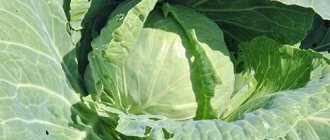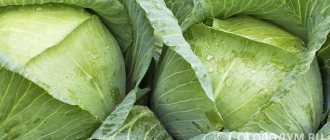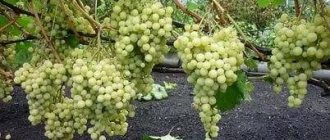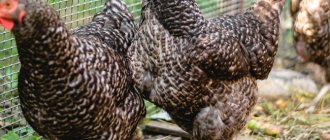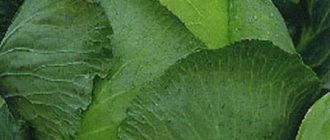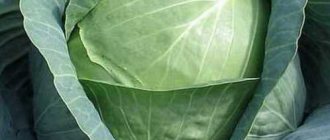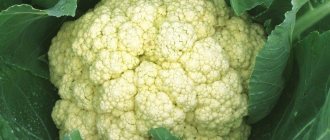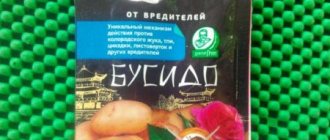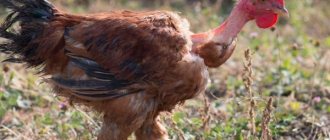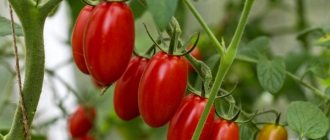Golden Hectare cabbage has been the most popular variety among summer residents for decades. Both citizens of the Russian Federation and people living in Moldova and Ukraine love the Golden Hectare. This cabbage was created by scientists from the VIR named after. N.I. Vavilov, back in 1938. After 5 years, the Golden Hectare was included in the State Register. Recommended for cultivation in the following regions of the country:
- Severny.
- North-West.
- Central.
- Central Black Earth.
- Volga-Vyatka.
- Nizhnevolzhsky.
- Srednevolzhsky.
- Uralsk.
- East Siberian.
- Far Eastern.
In the article you will find a description of the variety, a photo of the Golden Hectare and reviews of summer residents about it.
Description of the cabbage variety Golden Hectare
The root system of the Golden Hectare cabbage is a taproot. The depth of its penetration into the soil is from 30 to 40 cm. Small roots go much deeper - up to 1 m.
The stem is a short and thick stalk. It is very leafy. The stem color is white-green.
The leaves are round, quite large underneath, gray-green with veins.
In the upper part, small leaves are collected in round forks. They are white.
The leaf rosette is slightly raised. It is small in size (circumference 60-75 cm). The leaves themselves are entire, located on short petioles. Their surface is smooth, in rare cases slightly wrinkled. The stalk inside the head of cabbage is small.
Ripening time ranges from 100 to 110 days. The harvest is harvested almost simultaneously, since ripeness occurs immediately in all specimens.
Characteristic
This is an early ripening variety of cabbage. The full growing season lasts about 100 days (60 when planting 35-day-old seedlings in the ground).
The heads of cabbage ripen almost evenly. The average weight of a mature head is 4 kg. But more often small heads of cabbage weighing 1.5-3 kg grow. They themselves are of medium density, which is generally typical for all early ripening varieties. Due to the presence of a large amount of vitamin C in the Golden Hectare, this cabbage is classified as a dietary product.
The leaf is entire and has a fairly short petiole. The dimensions of the leaf are quite small, round or oval. The leaf color is gray-green. There is a slight waxy coating on the surface. The edge is smooth, less often with slight wavy. The inner stump is short but very thick.
The root of the Golden Hectare is taproot and branching. The root length reaches 40 cm.
This is a high-yielding variety. Under favorable growing conditions, you can collect up to 50-85 tons from 1 hectare of plantings. Or 5-6 kg per 1 m2. These are high figures, since many early varieties cannot boast of such yields.
The yield of marketable products from the entire harvest is 90-99%.
The variety has a fairly strong immunity, which protects against many diseases typical of cabbage. However, the “hectare” is not protected from clubroot at all. Also, as the manufacturer himself notes, the heads of cabbage are not prone to cracking. However, some summer residents who grew this variety noted that when there is an excess of moisture, the heads of cabbage still crack.
As for resistance to climatic conditions, the Golden Hectare tolerates short-term droughts and frosts quite well.
But keeping quality is not very good, in general, like any early-ripening cabbage variety.
Pros and cons of Golden Hectare cabbage
The positive features of the Golden Hectare cabbage variety include:
- early and simultaneous maturation;
- high productivity;
- excellent taste;
- unpretentiousness in cultivation;
- excellent disease resistance;
- high resistance to pests.
Negative aspects of culture:
- impossibility of long-term storage;
- poor transportability.
It should be noted that among the early varieties, Golden Hectare cabbage has a fairly long shelf life - about 1 month. In other species, this figure is no more than 1 week.
Planting and caring for Golden Hectare cabbage
Golden Hectare cabbage grows best in sunny areas with loamy soils. Depending on the climate, the crop can be grown in open ground or through seedlings. Plants are planted at a distance of 0.5-0.7 m from each other.
Important! To obtain very early harvests, the seedling method of cultivation is used.
Seeds are planted in open ground at the end of April. When growing seedlings, this is done at the end of March, and young plants are transferred to the beds in mid-May. In this case, you can take soil similar to what is in the garden. Watering the seedlings is done once every 2-3 days, as the soil dries out; there is no need to fertilize before planting in open ground.
Caring for adult plants is quite simple: watering twice a week with 5-10 liters, regularly loosening the beds and killing weeds
Fertilizing is done 3 times a season: in the middle and end of May and in the second ten days of June. In all cases, a mixture of nitrogen and phosphorus-potassium fertilizers is used.
Important! 1-2 weeks before harvesting, stop watering and fertilizing.
Growing kohlrabi from seeds
Seeds are processed as follows:
- The water is heated to 50 °C;
- Seeds are dropped into it for 15 minutes;
- After this, keep in very cold water for a minute;
- After this, 12 hours in a solution with trace elements;
- After the solution, they are washed with running water and kept in the refrigerator on the bottom shelf for a day.
After all the procedures, they must be wrapped in a damp cloth and wait for the sprouts to appear.
The germinated seeds are planted in a spacious container with soil (it should include peat, humus and turf soil) and covered with cling film. The temperature of the crops should not exceed 20 °C. To prevent the seedlings from getting sick before they are transplanted into the ground, it is necessary to treat them with a non-concentrated solution of potassium permanganate. Two weeks before transplanting into the ground, the foliage is sprayed with a solution of potassium sulfate and urea (a tablespoon in total). Take a glass of water per plant.
Cabbage yield Golden hectare
The yield of Golden Hectare cabbage ranges from 5 to 8 kg per square meter. Accordingly, you can remove up to 800 kg from one hundred square meters. But these are indicators typical for industrial cultivation. In a private garden or cottage, the yield decreases by 2-5 times. According to reviews from those who grew the Golden Hectare variety, several tons are harvested from ten acres.
Increased yields can be achieved by planting crops more densely and following agricultural practices. Increasing the volume of fertilizers and watering rates during cultivation are not justified, since the plant will not have time to process them, and a large amount of nitrates and sulfates will accumulate in its tissues. It will become impossible to eat such cabbage.
How much money do you need to start a business?
If you decide to open an enterprise specializing in growing cabbage, you need:
- pay for business registration;
- buy inventory and equipment (the issue of expensive equipment can be resolved with the help of leasing companies);
- rent a warehouse, administrative premises and garages;
- purchase the most necessary office equipment (PC, printer, telephones, etc.);
- buy fertilizers and planting material.
The list of costs does not end there. You definitely need to carry out promotional events, buy a plant watering system, build a greenhouse (at least for growing seedlings), and also pay for renting a plot of land. As a result, even to organize the activities of a small farm you need to invest from 5-15 thousand dollars, and if you plan to engage in a larger-scale business, you will need investments 10-20 times more.
Diseases and pests
The Golden Hectare cabbage variety has good resistance to diseases and pests. This is not surprising, since this is precisely what the culture was bred for. Breeders have made every effort to select a stable and unpretentious variety.
But, despite this, with a serious deviation from agrotechnical standards, Golden Hectare cabbage can be attacked by various fungal infections. First of all, this applies to plants that are watered too much.
Important! Diseases characteristic of storage (gray and white rot, Alternaria and others) are not dangerous for Golden Hectare cabbage, since it does not sit for a long time.
One of the common diseases is powdery mildew. Its symptoms are known to any gardener. With it, various parts of the plant are coated with a powdery coating several millimeters thick.
A feature of powdery mildew on cabbage are black spots - a manifestation of tissue necrosis
The cause of the appearance of the fungus that causes the disease is the plant remains of the previous year, which contain its spores. The active phase of treatment of the disease involves the use of the drugs Phytophtorin and Ridomil. If you do not want to use such powerful means, you can get by with something simpler: spraying with a 1% solution of Bordeaux mixture.
But it is best to carry out preventive measures in the form of treating the soil with copper-containing preparations some time before planting the crop in open ground. This may be the already mentioned Bordeaux mixture or a solution of copper sulfate.
Of the pests characteristic of cruciferous vegetables, Golden Hectare cabbage can be affected by white cabbage during mass summers. This is the main enemy of the crop, periodically appearing even on the most resistant varieties.
The main problem is not the adult whites, but their larvae, which have a characteristic color
Over the summer, 2 to 3 generations of butterflies can change. In fact, it takes the fourth to winter. Since the Golden Hectare cabbage variety is early, it falls under the first two generations of the pest. Moreover, one will parasitize on young plants, and the second on those already ready for harvest.
No other pest, not even cruciferous flea beetles, has such a detrimental effect on cabbage, so flea beetles should be dealt with especially carefully, regularly inspecting the plants for caterpillars and eggs.
Fortunately, the whitefish does not have good resistance to poisons, and drugs that are not particularly dangerous to humans can be used to neutralize it. These include Karbofos, Iskra M and others.
Temperature
In order for the seedlings to grow strong and form quickly, the temperature regime must be observed. Before the first shoots form, the room temperature should be +19 degrees. After they are formed, the temperature during the day should be +17 degrees, at night - +10 degrees.
14 days before transplanting into open areas, the sprouts need to be hardened off. At the first stage of hardening, the plants need to be gradually accustomed to cool air; several hours a day is suitable for this. At the next stage, the sprouts need to be taken outside.
It is necessary to ensure that direct rays of the sun do not penetrate the inflorescences; for this purpose, create a shadow. The seedlings remain outside for the last couple of days. After 5 leaves appear, the seedlings are dug into an open area.
Application
Since Golden Hectare cabbage is an early ripening variety, its shelf life is short, no more than a month. Therefore, the harvested crop needs to be consumed or processed as soon as possible.
It is used raw in various salads; first and second courses, as well as pies, are made from the Golden Hectare. For consumption at a later date, preserved food is used. Salted and sauerkraut Golden Hectare is able to retain its good taste and most of its vitamin content for 3-4 months. When preserved with sterilization, these periods can be extended to 5-7 months.
